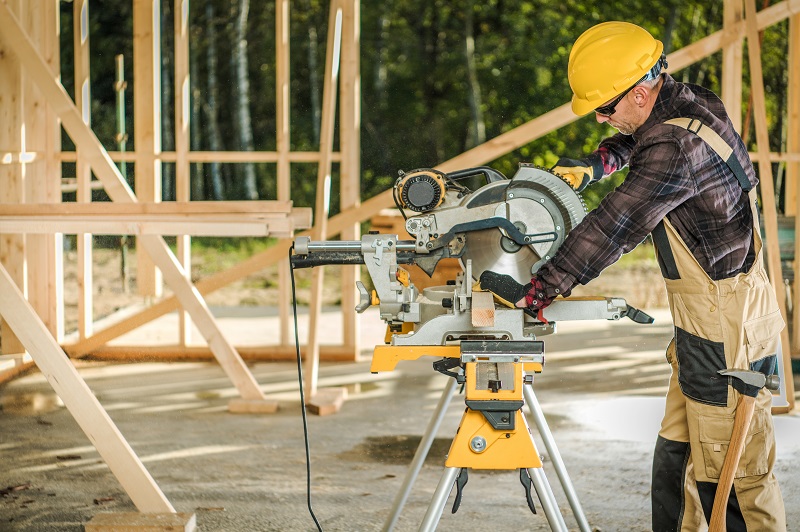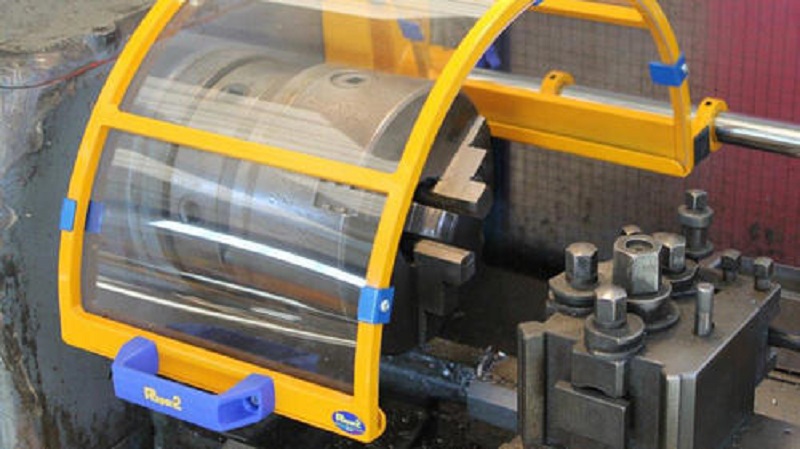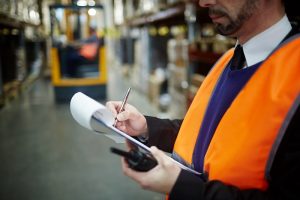Navigating through the OSHA machine guarding requirements can be daunting, but ensuring your company follows suit can save you money in fines and penalties when an inspector comes around.
Machine guarding isn’t one-dimensional – it’s not isolated to the point of operation and the machine operator.
Instead, multiple points need to be safeguarded with secondary controls put into place, such as alarms and fences. Furthermore, there are particular methods of machine guarding for power transmission devices and operating controls.
With the extensive amount of OSHA standards and requirements in place, it’s no wonder they’re easily overlooked, and machine guarding is one of OSHA’s top 10 most cited violations.
To give you an overview, we’ve compiled this guide of everything you need to know for using machines in the workplace.
What Are the Hazards Associated With Guarding of Machinery and Mechanical Power Transmission Apparatus That Need Safeguarding?
The first step to achieving OSHA federal government occupational safety and health compliance regarding machines is identifying the types of hazards they possess – mechanical motions and mechanical actions.
Mechanical motions and how they can be hazardous include:
- rotation - even slow rotation in flywheels and shaft ends can cause fingers, skin or body parts to get pulled or stuck,
- ingoing nip points - common in gears, ingoing nip points rotating can also lead to body parts or clothing getting pulled or stuck,
- reciprocation - the back-and-forth action could strike an unsuspecting body part, and
- traversing - a worker may be struck or caught in a pinch or shear point by the moving point.
Mechanical actions that can put hands and fingers at risk, as well as produce byproducts such as flying chips and sparks that can strike a worker, include:
- cutting,
- punching,
- shearing, and
- bending.

What Types of Machine Guarding Are Needed at the Point of Operation and Beyond?
Employers are responsible for performing a risk assessment for their workers’ machines to ensure their machine guarding is up to scratch, powered by OSHA standards.
While the manufacturers of machines generally address all the hazards related to an installed machine at the point of operation, establishing and addressing the hazards beyond that is your responsibility. These safeguards are to protect:
- maintenance staff,
- engineers,
- clean-up personnel, and
- anyone else within close proximity of the machine’s operating environment.
Therefore, in many instances, you will need to build your own safeguards using metal in many instances or plastic where feasible if visibility is required.
To identify the appropriate safeguarding for each machine, you first need to assess:
- the type of operation,
- the handling method,
- how the operating environment is laid out,
- the type of material, and
- what the production requirements and limitations are.
Safeguards are classified using two categories: guards and safety devices.
1.) Guards stop access to hazards using barriers, such as:
- fixed guards - simple, permanent guards attached to the machine,
- interlocked guards - when a guard is removed, it causes the machine to stop by using a tripping mechanism, and the machine won’t start again until it’s replaced,
- adjustable guards - can accommodate stock of various sizes, and
- self-adjusting guards - only stock of a certain size will trigger the guard barriers to open, and the opening is big enough to fit the stock only.
2.) Safety devices can have various safeguarding functions:
- cease a machine if a body part is in the danger area,
- hold or draw back an operator’s hands from the danger area,
- not operate until both of the operator’s hands are on the control to keep them away from the danger area, and
- have a barrier synchronized to the machine’s operating cycle, so the danger area can/t be accessed during the machine’s operating.
Machine guarding safety devices include:
- presence-sensing devices,
- electromechanical sensing devices,
- pullback devices,
- restraint devices,
- safety trip controls,
- two-hand controls, and
- gates.
How To Ensure Machine Guarding Safety
With more machines at the workplace, the more risks and hazards are involved for the operator and other employees.
Additionally, machines manufactured in the 1970s or earlier need particular attention as to whether the OSHA requirements for machine guarding occupational safety and health are being met. They may need to be retrofitted with additional safeguards that protect to higher safety standards.
You should inspect and assess machinery and machine guarding regularly to ensure equipment is functioning correctly. The operator should do this as well before every operating cycle and report any inconsistencies.
Training is one of the most critical general requirements of occupational safety, health administration. Any worker in contact with machinery, whether it’s at the point of operation or for cleaning, needs adequate and appropriate training on the machinery hazards.
Requirements for machine guarding training for workers includes:
- how to identify the hazards present in specific machinery and equipment,
- what the different safeguarding includes,
- what hazards the safeguards are protecting the operator and workers from,
- how different safeguards provide protection,
- how to use various methods of safeguarding,
- when safeguards can be removed, why, and by whom, and
- what to do if a safeguard is damaged or missing.

How Insure Compliance Can Help
We provide a safety assessment for all companies to identify the safety gaps in their business.
Safety gaps include:
- awareness gap,
- process gap,
- knowledge gap,
- verification gap, and
- accountability gap.
Once we’ve established where your gaps are, we recommend solutions to bridge these gaps, whether analysis of the workplace, policy creation, or training for all management staff and workers.
We also provide mock OSHA audits, to know how your company measures up to a real OSHA inspection, but without the fear of fines or penalties.
Key Takeaways
OSHA requires mechanical power transmission apparatus to have at least one or more safeguarding methods to protect the operator and other workers.
During machinery operation, hazards arise from mechanical motions (for example, nip points, rotating parts) and mechanical actions (such as flying chips resulting from punching).
The two types of safeguards used to protect workers and the area from hazards are guards and safety devices.
As the employer, it’s your responsibility to ensure worker safety by maintaining the safeguarding of all machinery and providing workers with adequate training.
To get your workplace up to government occupational safety, health standards, contact us today for resources, compliance assistance, training and more.
Disclaimer:
Please note that every effort has been made to ensure that the information provided in this guide is accurate. You should note, however, that the information is intended as a guide only, providing an overview of general information available to businesses. This guide is not intended to be an exhaustive source of information and should not be seen to constitute legal, safety or business advice. You should, where necessary, seek your own advice for any issues raised in your affairs.







